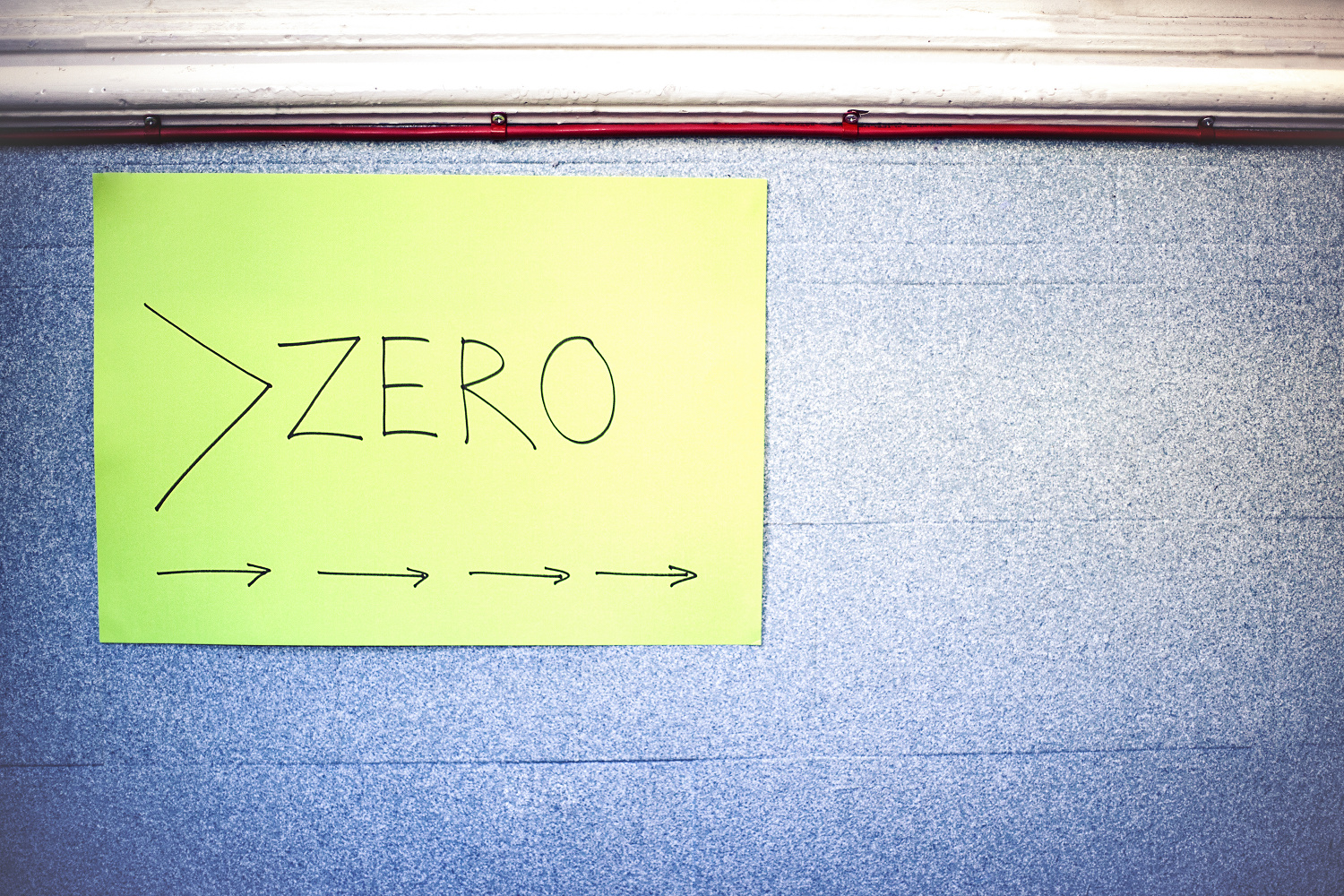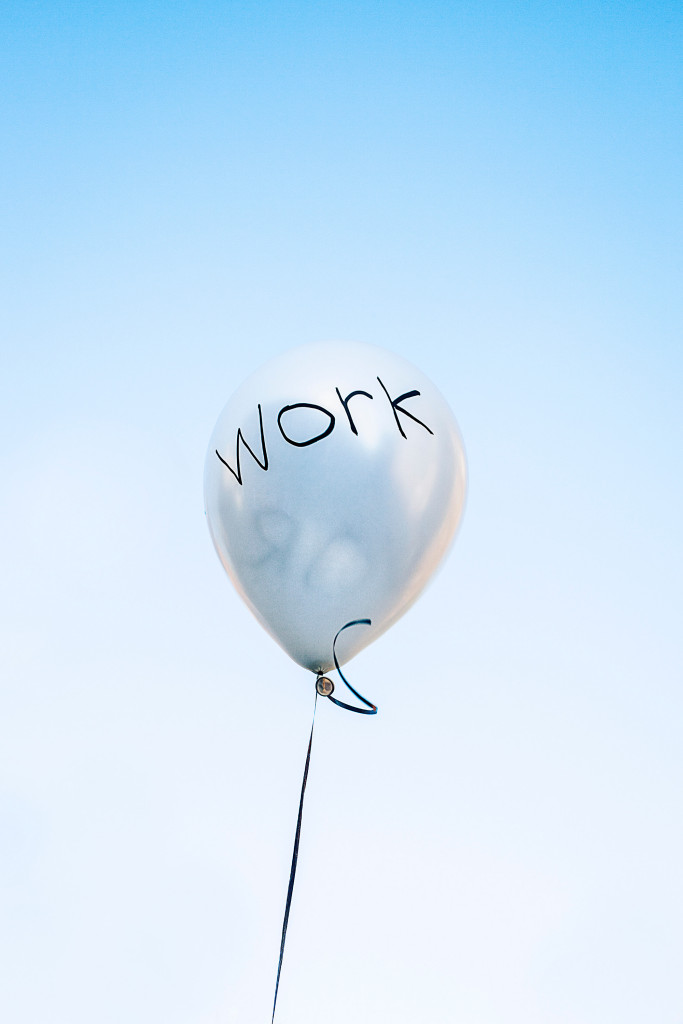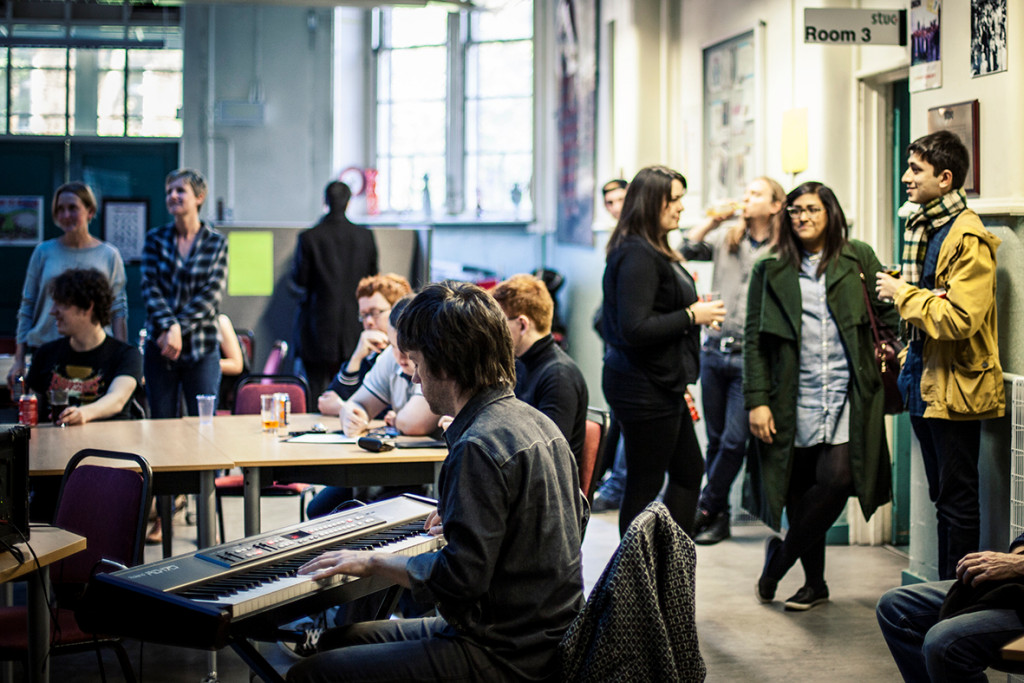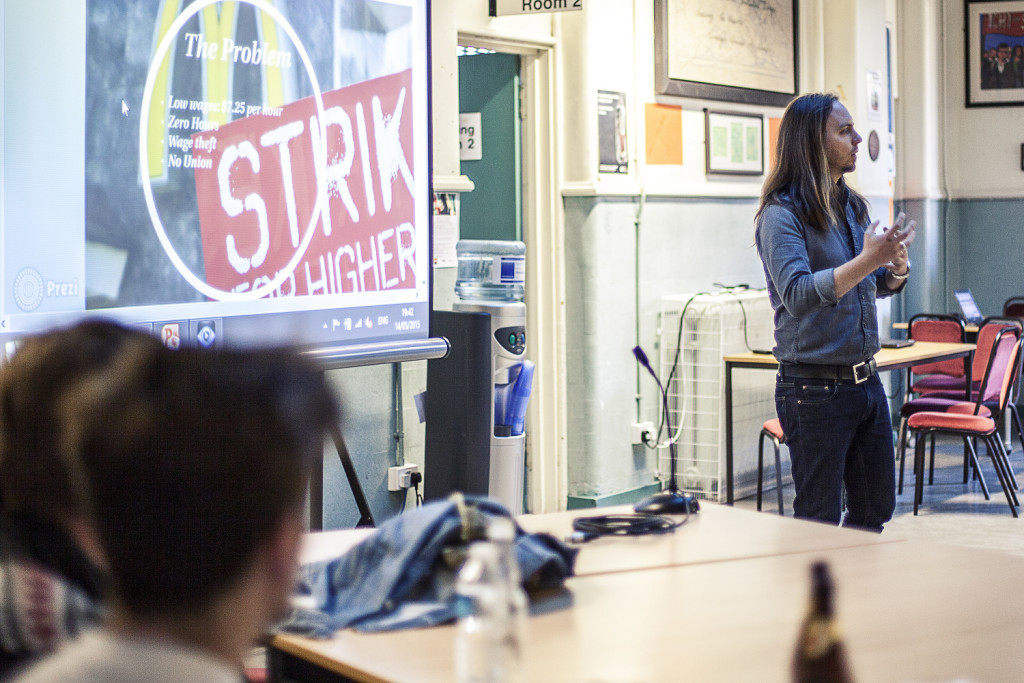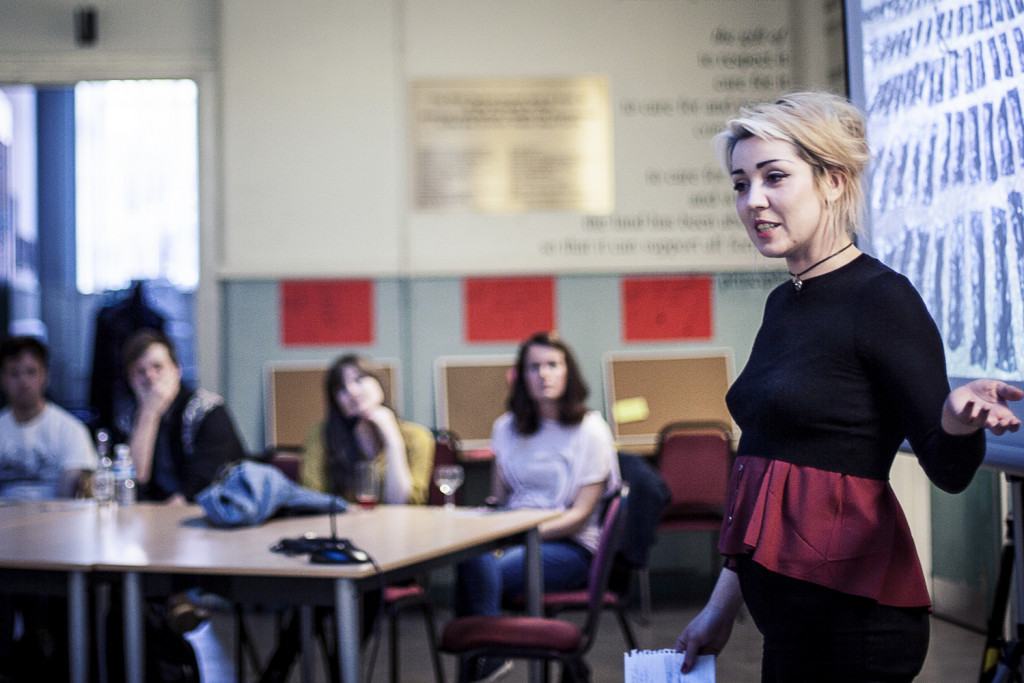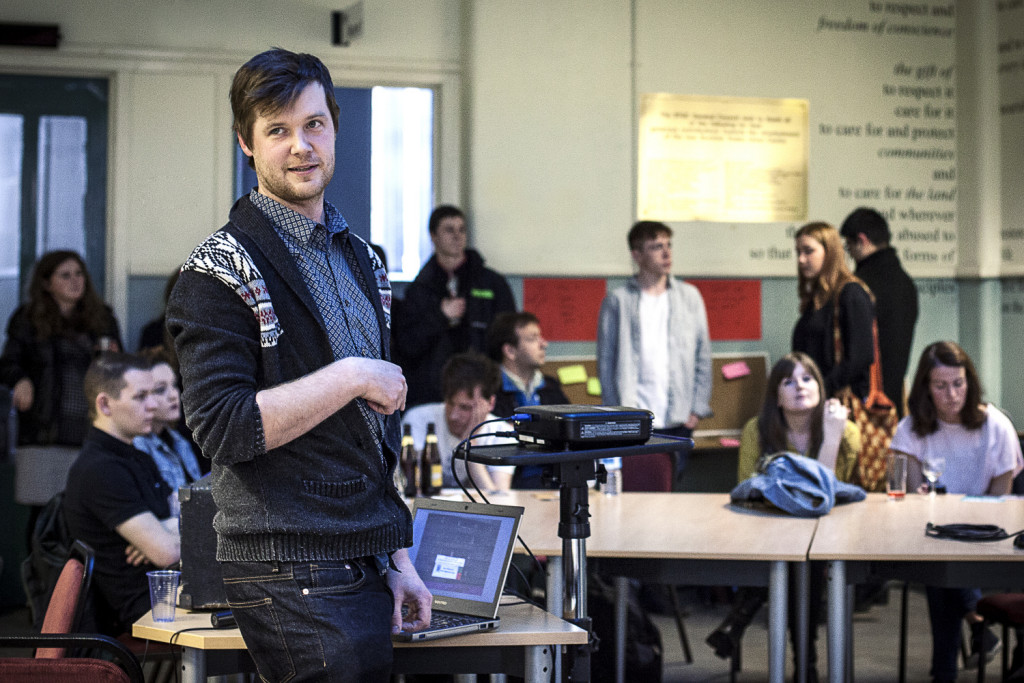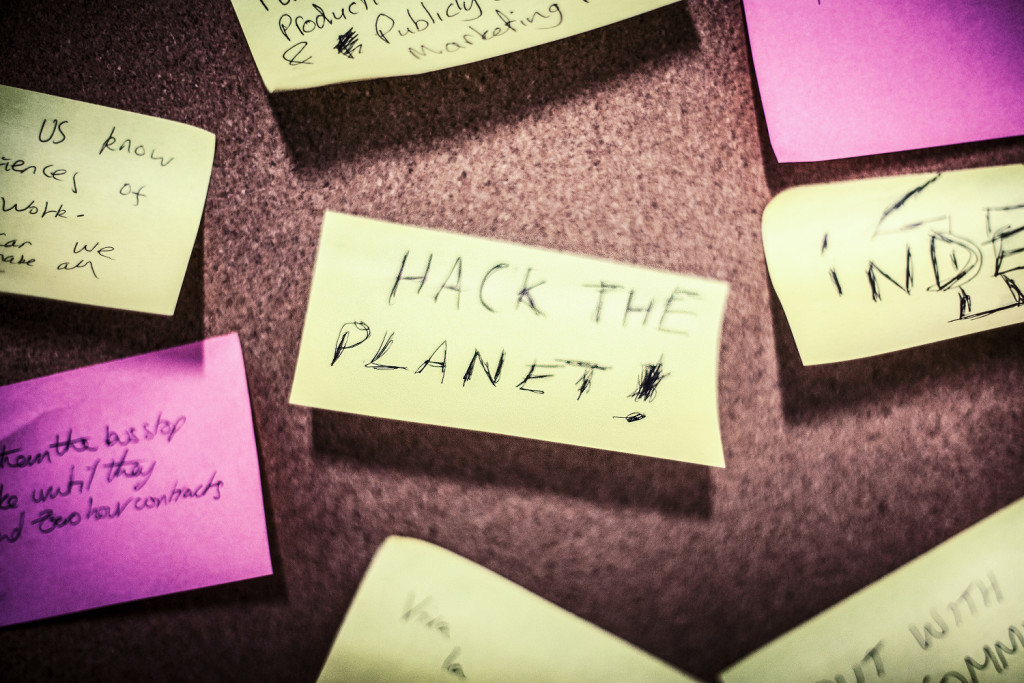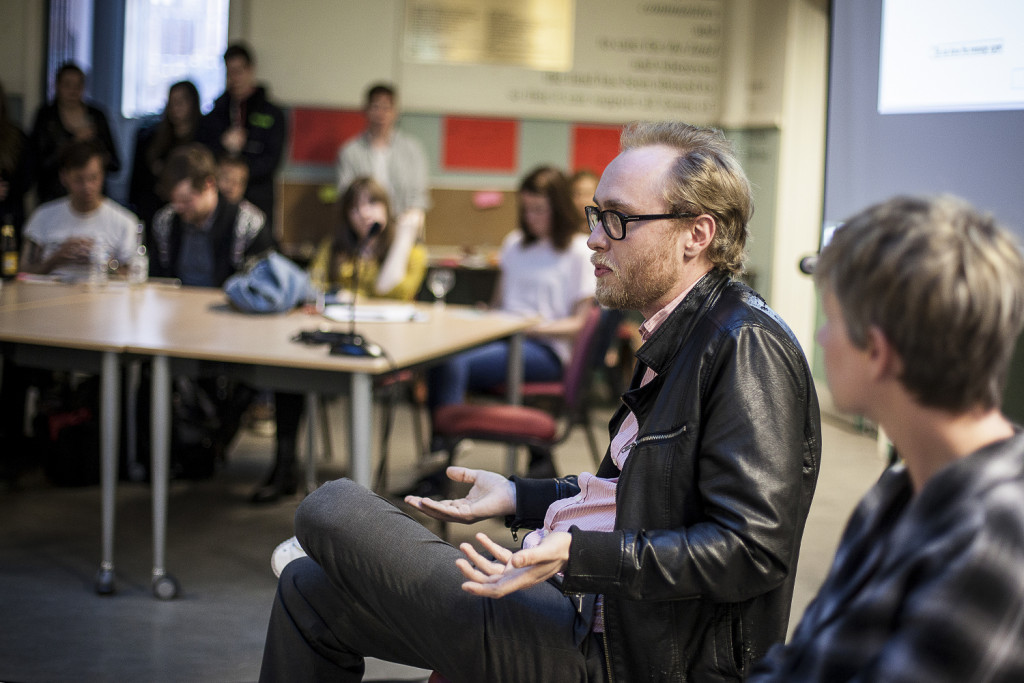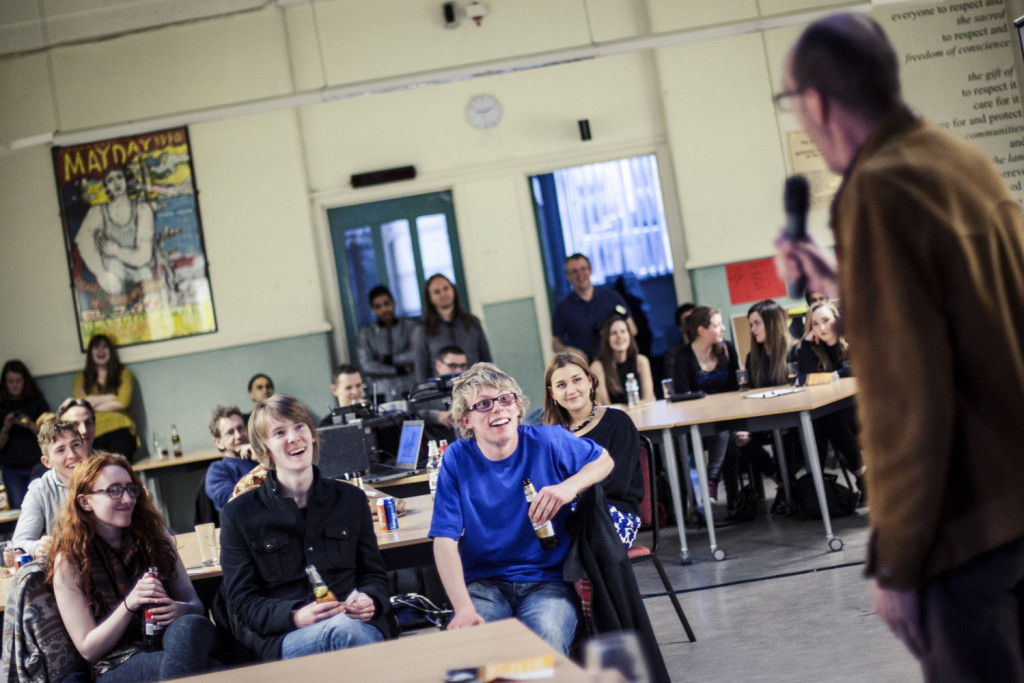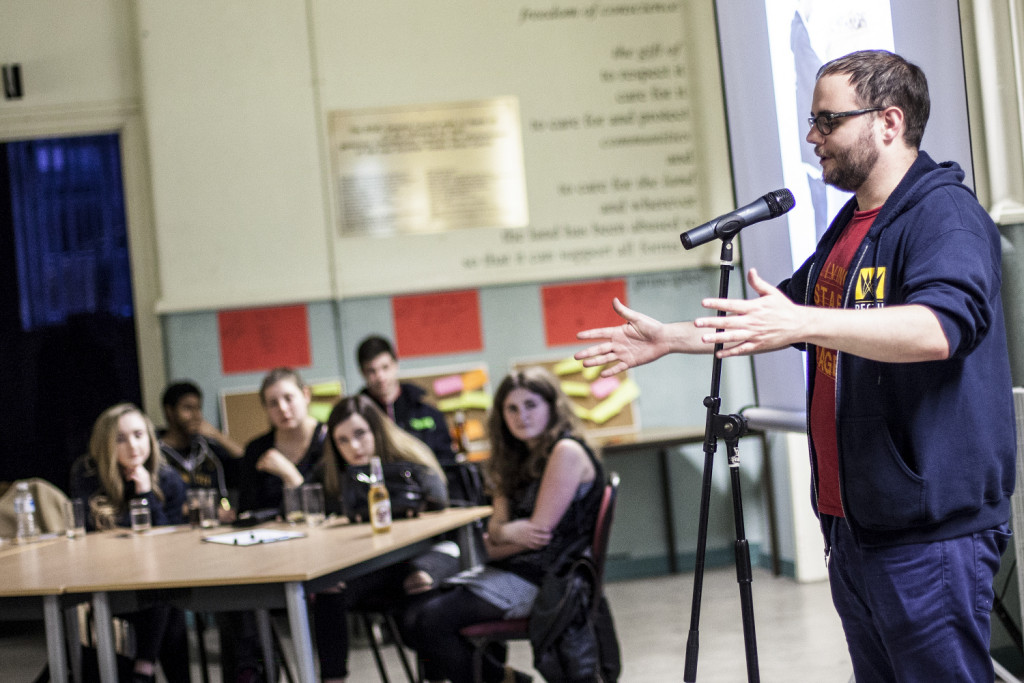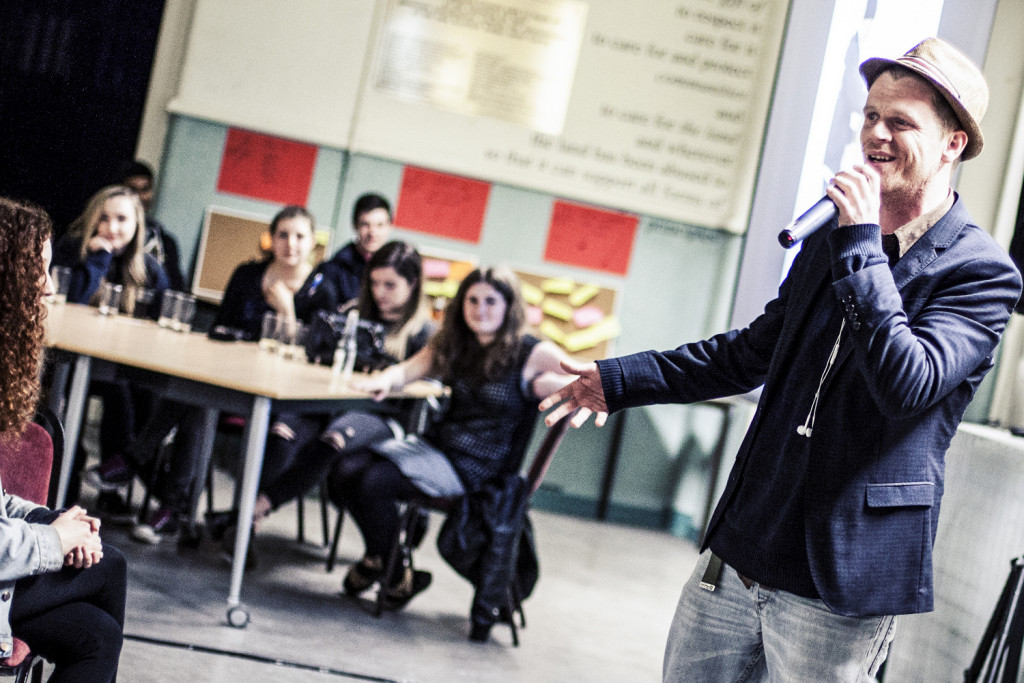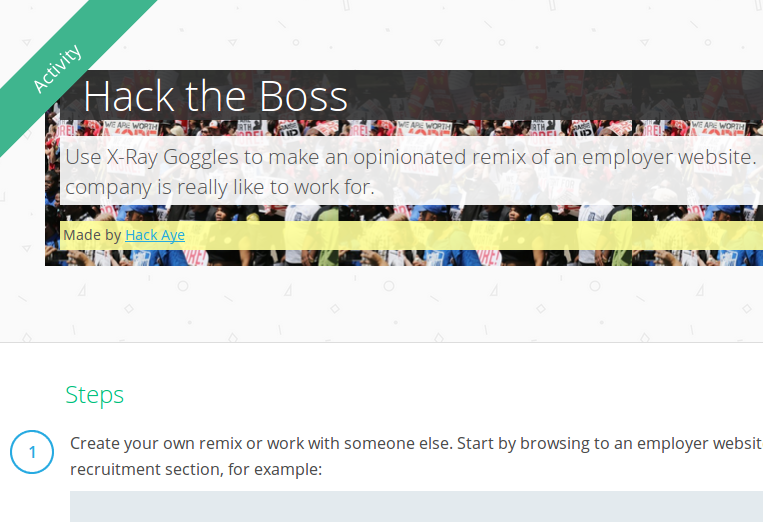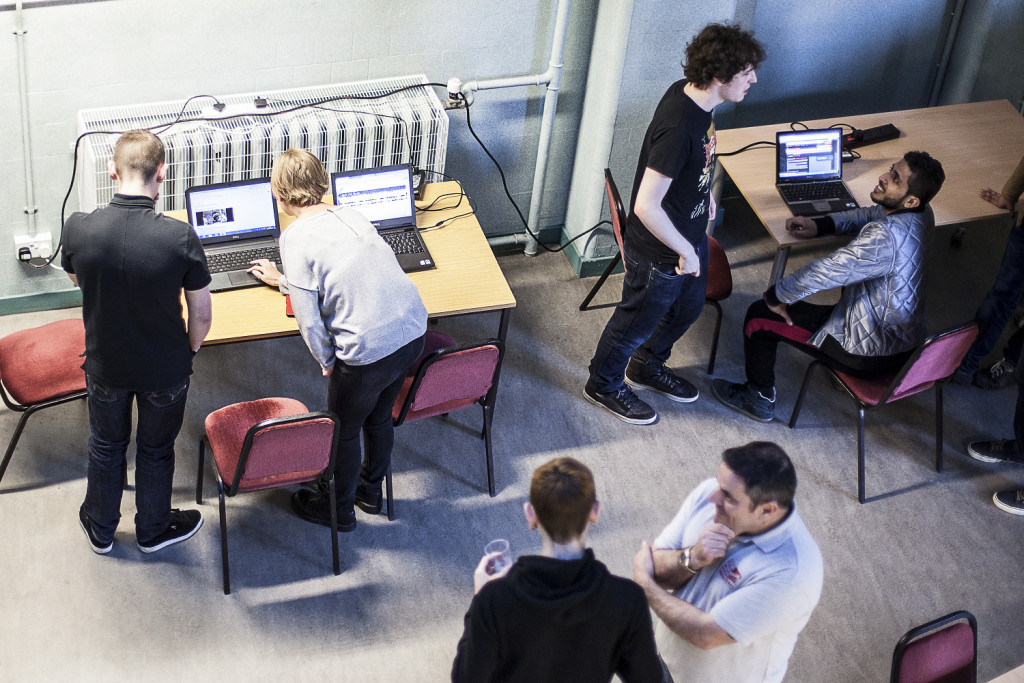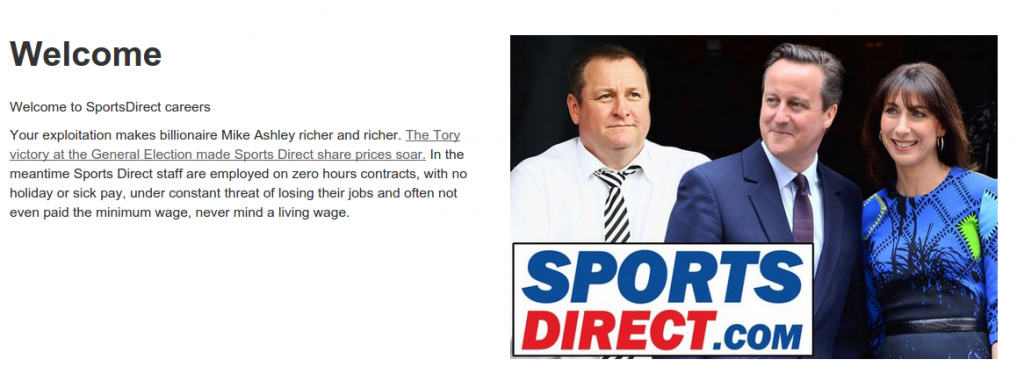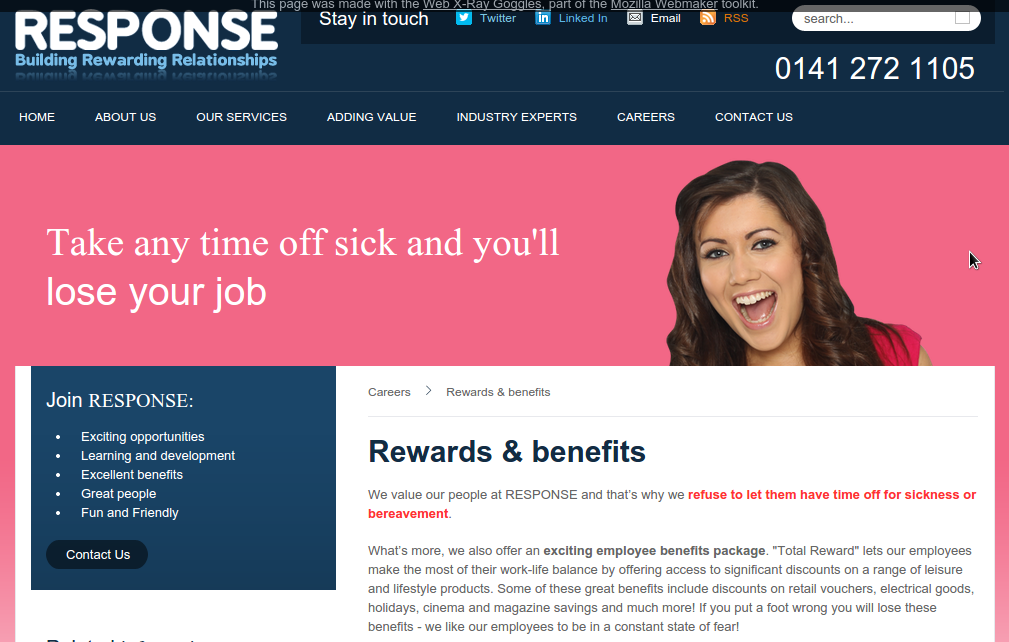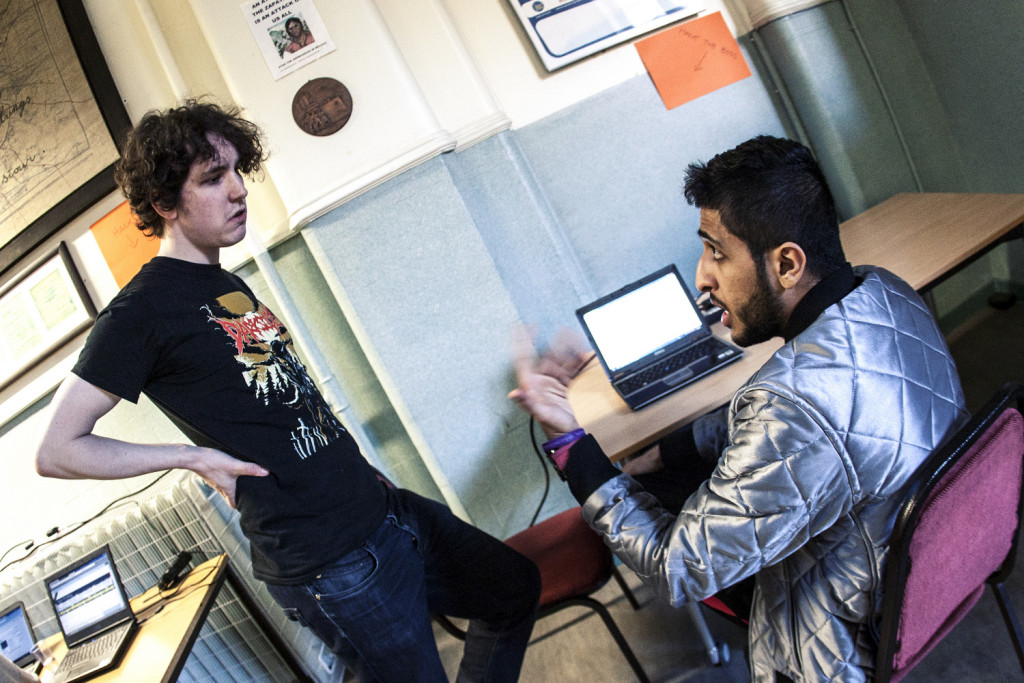On 14 May 2015, we organised an event at the STUC in Glasgow as part of the >ZERO campaign against “zero culture” – zero hours contracts, low pay, insecure work and unemployment. We brought young people together with artists, performers, technologists and activists to have their say on work and start to drive this campaign.
When participants arrived at the building, they were greeted by balloons bearing the message (popularised by Alasdair Gray):
“Work as if you live in the early days of a better nation”
Performances and talks took place in the midst of participants, rather than on a stage.
Activists and artists kicked the night off with a few talks about experiences of work, emerging movements and the role of creativity in change.
The event provided a range of channels for participants to contribute stories and views about their experiences of work, including anonymous audio recordings, post-it notes, visual art (via both traditional and digital techniques such as Photoshop) and various web tools.
John Mostyn kicked this process off by talking about his experiences with Response call centres.
Comedian Bruce Morton performed a set on the topics of work, class and the Greater Shawlands Republic.
Rob from the Ritzy Cinema living wage campaign in London shared what they’ve learned through this high-profile movement.
Hip hop artist and writer Loki talked about class and communication, performing an interactive set that challenged participants to question their own assumptions.
While the performances and talks took place intermittently throughout the night, we had tech activities available for the duration of the event. We used Mozilla’s X-Ray Goggles tool to Hack the Boss using an activity we designed for >ZERO:
Mozilla’s Webmaker tools are designed to empower web users to become web makers. Although these tools are primarily intended to support learning web technologies, they are well suited to a spot of vandalism!
We visited employer websites and changed the content to reflect what these companies are really like to work for. You can see some of the remixes from the night in Hack Aye’s makes:
We also presented participants with tech tools for collaboration including an etherpad for collecting experiences of work and a GitHub project to formalise beliefs about rights in work. These methods will remain available for future participants in the >ZERO campaign to add to, or for anyone who wants to remix them.
With the the upcoming Dot Comrades event in mind, Hack Aye hopes to continue exploring the application of open source tools and techniques to activism.
Since this was our first real activity using the tech tools for hack activities, we learned a lot! In the spirit of open source, we plan on documenting and sharing whatever we learn as we go along. Sue has never facilitated this type of experience before, and came away with the following notes for future events:
- Make sure people understand an activity is anonymous. People were wary of hitting that “Publish” button even though the laptops were all signed into Hack Aye’s Webmaker account. Because of this we lost any record of some of the hacks participants carried out.
- Give people support while still allowing them space to play around. It was tricky to strike the right balance between helping people use the tools and not hovering over them too much for them to feel able to express what they really think!
- Going through a process yourself makes people more likely to have a go. Following various speakers at the start of the night, Sue kept the intro to the hack activities short – in retrospect, going through the motions might have made more participants keen to try it themselves. A more focused introduction with a smaller group who had chosen to try the activity would have been even better.
- Night-time events with alcohol are not suited to playing with code! This event was an informal evening activity with music and a bar. People tended to chat more about the tools than actually use them. Slightly more structured / less casual environments will probably work better for future tech activities.
We had a multiple-genre playlist curated for songs about work, playing in the background at various points in the evening:
Our compilation of clips about Anonymous/hacktivism played in the background during quieter periods:
Both Jen and Sue learned a load working on this event – and met lots of future collaborators we’re looking forward to working with on other projects. The experience enforced our initial belief in the value of:
- what artists and technologists can bring to learning and activism
- making/hacking not only for expression but also for learning
- listening to what people have to say.
Read on for tweets, posts and photos from the night.
